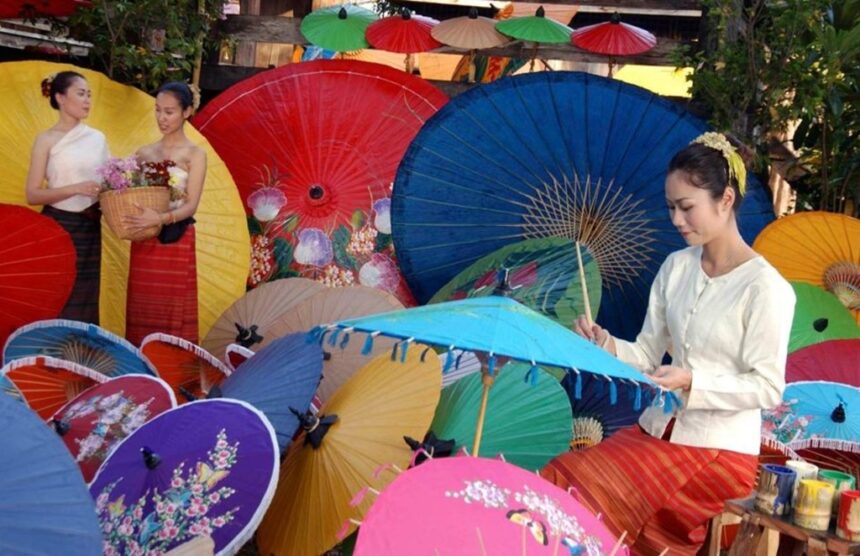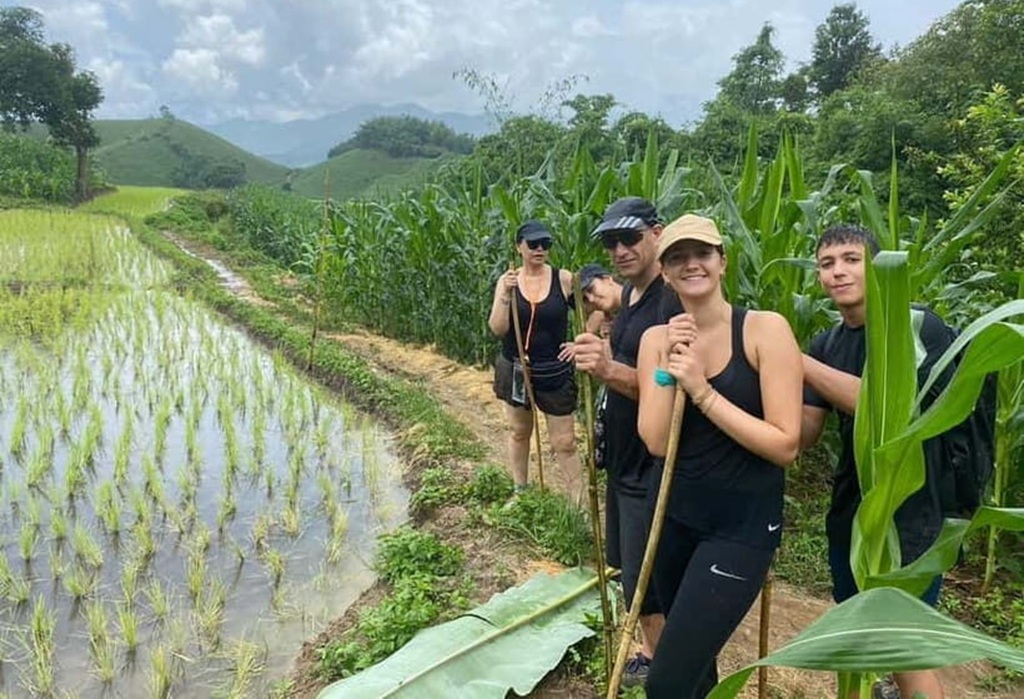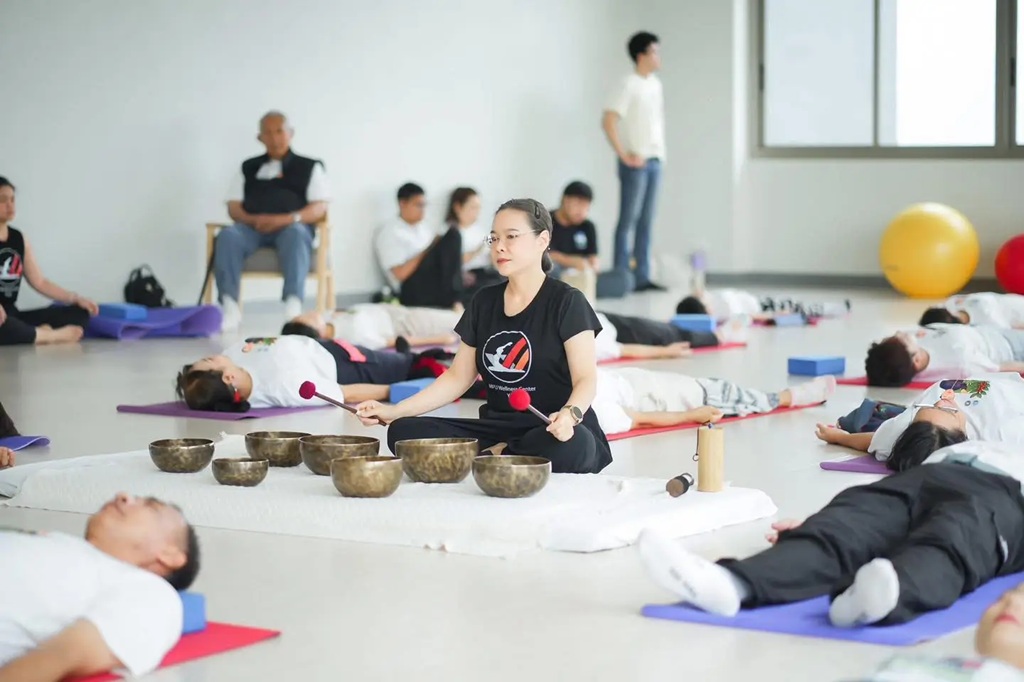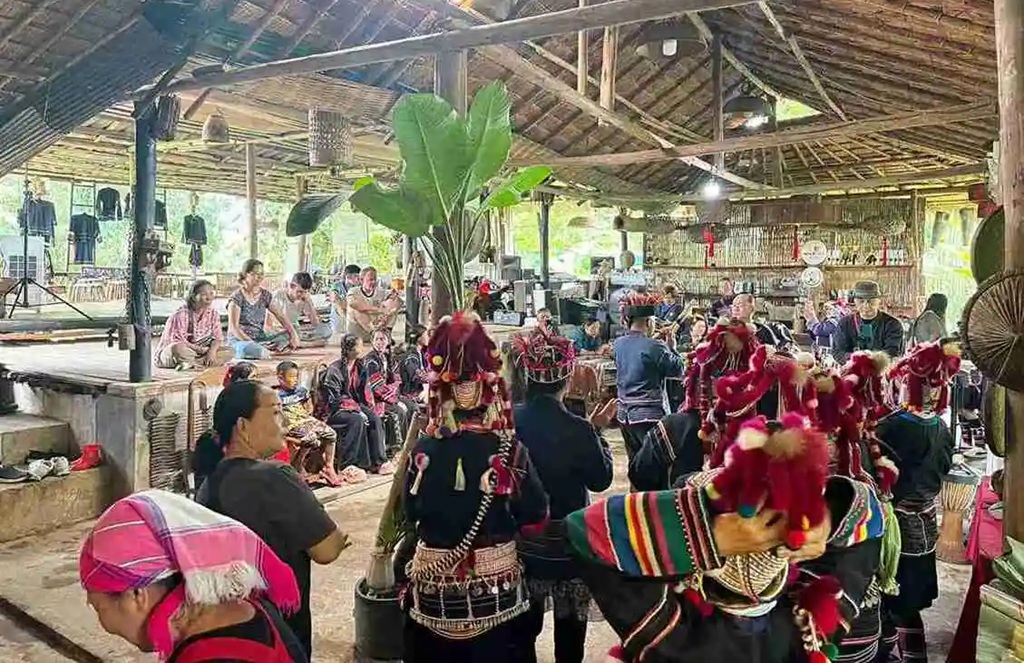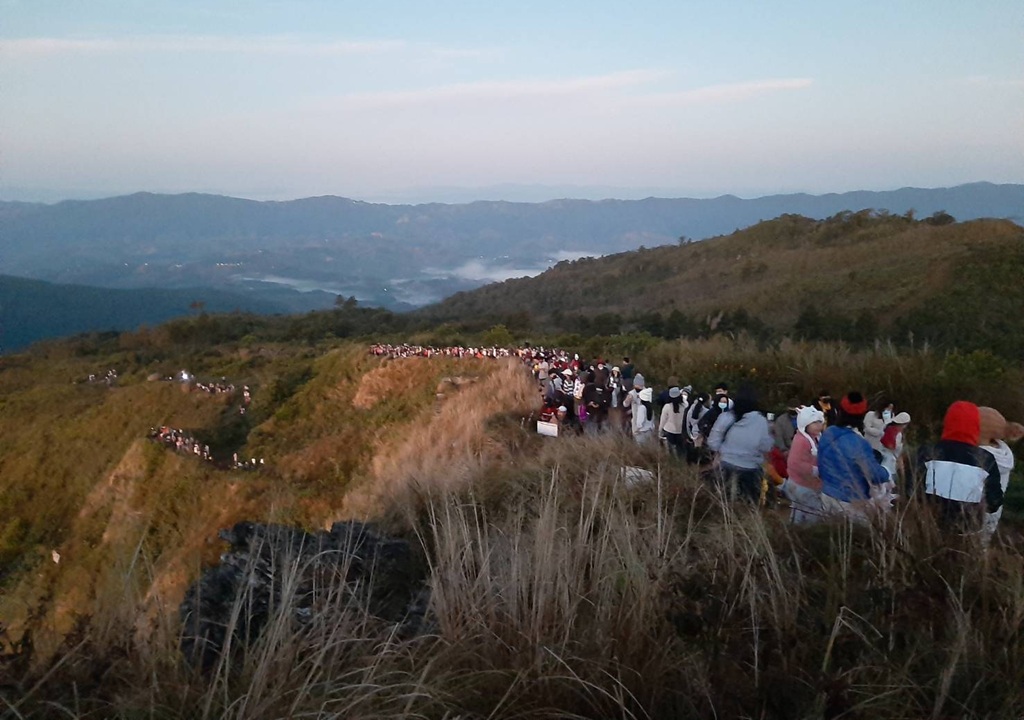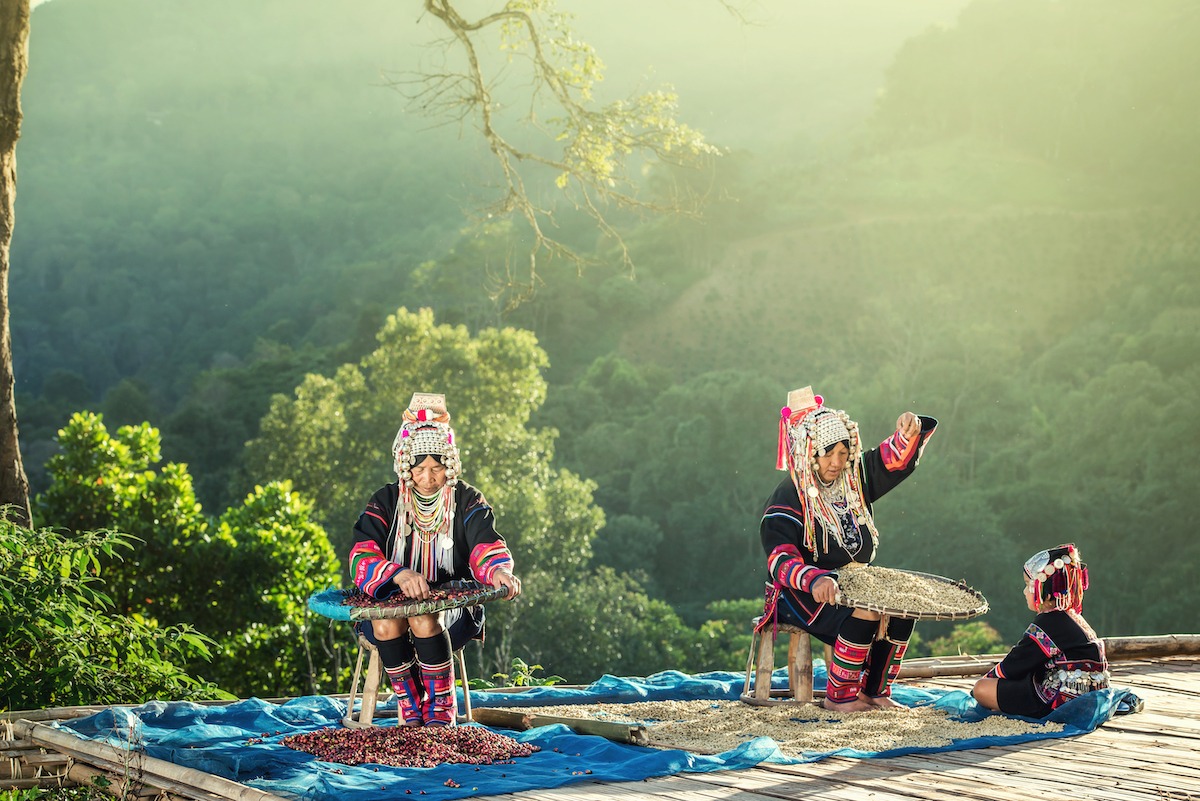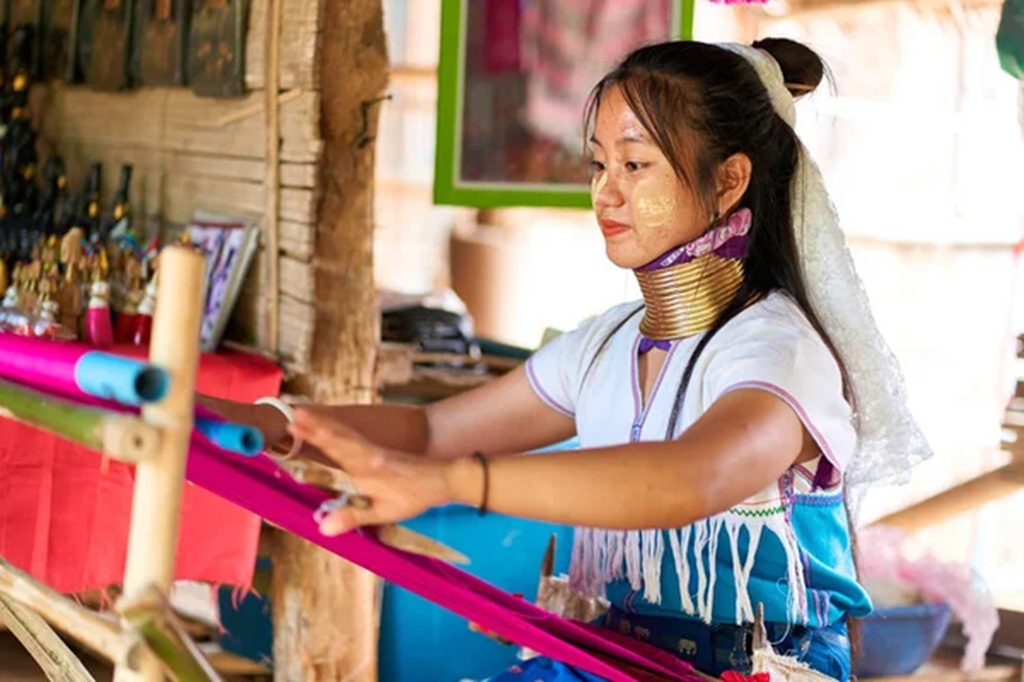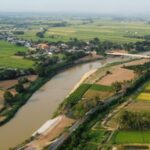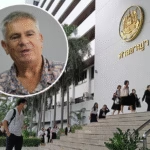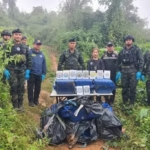CHIANG RAI – In Thailand’s far north, morning mist drifts over rice terraces, and old Lanna temples stand quiet among green hills. Here, Chiang Rai is quietly shifting its identity.
Long seen as a side trip from Chiang Mai, the province now wants to stand on its own. It is not chasing quick visits or checklist sightseeing. It is inviting travellers to slow down, restore their health, and connect with place and people more deeply.
A comprehensive new study from the Tourism Authority of Thailand’s TAT Academy sets out a bold 20-year roadmap. The aim, to position Chiang Rai as both a Creative Tourism City and a Health City.
The document, Intentional Horizons: Chiang Rai’s Odyssey Toward Sustainable Wellbeing, aligns with seven of the ten leading global travel trends for 2025. The shift signals a clear move away from surface-level trips. The focus is on richer links with culture, nature, and local communities.
This is not a standard policy paper. It reads like a plan for the next era of travel. Based on field research, community workshops, and data from more than 5,000 travellers and residents, the report frames Chiang Rai as a test bed for intent-led travel. Trips are guided by purpose, not by social media photos.
The vision rests on three pillars: sustainability, measurable well-being, and real immersion. Dr Supaporn Chaisuwan of TAT Academy says Chiang Rai will leave behind box-ticking tourism. She notes that visits should serve personal growth and care for the planet, backed by clear data on outcomes.
Creative City of Design
The vision builds on momentum already in place. In 2023, UNESCO named Chiang Rai a Global Geopark and a Creative City of Design, joining a global network of 55 cities. The province’s blend of Lanna architecture, hill tribe craft traditions, and modern design has long been strong. Now, these strengths will pair with health-centred ideas.
The report outlines wellness retreats rooted in local herbal knowledge, mindfulness walks in biodiverse forests, and hands-on studios where guests co-create sustainable objects with indigenous makers. Over 20 years, TAT projects a 300% rise in eco-aware visitors. The plan estimates 50 billion baht per year for local economies, along with a 40% cut in emissions through green infrastructure.
The strategy draws closely on worldwide travel shifts identified by groups such as UN Tourism and Globetrender. Of the ten key trends shaping 2025, Chiang Rai’s plan matches seven.
These include intent-led travel, eco-tourism and sustainability, wellness and health-led journeys, cultural immersion with experiential learning, community-based stays and local ties, slow travel with quiet routes, and tailored experiences supported by technology.
These themes become practical tools rather than empty terms. TAT Academy maps them to clear actions, such as 11 low-carbon travel routes, blockchain-based impact tracking, and deals with platforms like Booking.com to support personalization.
Intent-led travel is the central idea. It recasts the visitor as an active participant. Guests go beyond short stops at Wat Rong Khun or the Blue Temple. They arrive with a clear purpose, such as recovering from burnout, finding creative spark, or deepening bonds across generations. Experiences then fit those aims.
Picture a manager from Singapore on a seven-day Design Your Dharma stay. Mornings are spent sketching Lanna patterns with master artisans in a hill tribe village. Afternoons bring foraging in Doi Mae Salong’s tea hills for wild herbs. Evenings close with guided sound work using Thai gongs.
National Green Tourism Plan
According to TAT Academy data, 69% of travellers in 2025 prioritize such meaningful activities, up from 45% in 2023. The plan supports this with the Intent Weaver app, a TAT tool that applies AI to shape journeys from user inputs. It aligns daily choices to personal goals and reduces harm to the environment.
Sustainability is woven through the plan at every stage. Chiang Rai’s geography, nestled between the Mekong River and the Daen Lao mountains, suits regenerative approaches. The report proposes a zero-waste framework that could make the province of Thailand’s greenest by 2035. It ties into TAT’s national Green Tourism Plan 2030 and the Thailand Good Travel mark.
Operators would undergo regular eco-audits. Key steps include extending the 200 kilometres of bamboo-railed bike paths, switching the Golden Triangle shuttle fleet to electric vehicles, and restoring traditional paddy farming as shared agro-art sessions. Visitors plant heirloom rice with Akha farmers and learn why each step matters.
Wellbeing is measured through the Harmony Index, a TAT Academy model that blends WHO scales with local signals like biodiversity health and the share of income kept by communities. Early pilots in Mae Fah Luang show a 25% rise in guest satisfaction and a 15% lift in artisan earnings. The results suggest tourism can give back more than it takes.
Wellness and Dhamma Therapy
Health-led travel forms the third strand, placing Chiang Rai in the same conversation as Ubud in Bali or Nosara in Costa Rica. The report highlights four flagship experiences with strong appeal for older travellers. These include Dhamma therapy in forest wats, herbal balms made from wild ginger and turmeric, taste therapy through fresh Lanna cuisine, and nature hikes to Khun Kon Waterfall.
The plan links these to evidence, not indulgence. Mahidol University’s Sustainable Tourism Acceleration Centre supports pilots with biometric tracking. Wearables monitor stress markers before and after, then feed real data into product design.
For families, intergenerational wellness pods at resorts such as the TAT-certified Tantawan Tented Camp combine yoga and storytelling circles with wide valley views. By 2045, the plan expects Chiang Rai to welcome 500,000 wellness visitors each year. This contributes to Thailand’s target to reach 20% of the global wellness market, worth around 1.2 trillion US dollars.
Culture sits at the heart of the creative tourism plan. It aligns with the clear push for experiential learning, which 76% of Gen Z and Millennials say they prefer. The report proposes Creative Caravan circuits. These pop-up ateliers would appear within the Baan Dam Museum’s dark, sculptural halls, where guests work with artists inspired by Thawan Duchanee to build eco-sculptures from reclaimed teak.
Integration With Hiitibe Communities
In another route, visitors try batik dyeing with Yao communities and imprint motifs that hold farming knowledge. The model is participatory and fair. Revenues flow back into programmes that protect Lanna scripts and preserve local dialects.
Community ties deepen in homestays across Karen villages. Meals are cooked on wood fires, and stories are shared under clear night skies. TAT Academy’s surveys show these bonds lift repeat visitation by 40%, as travellers form lasting links with host families.
Slow travel balances the speed and crowding seen in mass tourism. The plan invites guests to move at Chiang Rai’s own pace. Over the next two decades, the Northern Bloom rail line would be renewed with TAT support. The route links small hamlets like Doi Wawee to the city, with carriages serving herbal teas and craft markets onboard.
Little-known places become gentle anchors, such as the sunflower fields at Phu Chi Fa or the glowworm-lit caverns of Tham Luang. Visitor numbers would be capped with dynamic pricing to protect fragile sites. Technology ties it together. AI-based platforms, similar to ideas outlined by Globetrender, craft personal themes. Think Artisan Ancestry for heritage-focused guests or Forest Forager for nature lovers.
The Prevention of Overtourism
The report also looks squarely at the risks. Overtourism leaves marks on forests and cultures if unmanaged. Chiang Rai has seen this in the past, through trail erosion and the commodification of village life. To guard against repeat harm, the plan introduces a Carrying Capacity Codex. This would set daily visitor limits for sensitive areas.
Funding, estimated at 10 billion baht over the first ten years, mixes TAT grants, UNESCO seed capital, and private eco-bonds. Early signs are promising. Since UNESCO’s 2023 recognition, arrivals are up 22%, and 70% of visitors say sustainability influenced their choice to come.
Local voices reflect the change. Kham, an herbalist from Ban Hin Taek, says tourism once strained rivers, but now community projects support their recovery. His cooperative now supplies most regional spas with herbal goods.
The model aims to shape national policy as well. It aligns with TAT’s New Thailand strategy for 2026, which puts emotion and meaning ahead of volume. In the foreword, Sandra Carvao of UN Tourism writes that Chiang Rai offers a route for travel that heals both people and places. With Thailand looking at 39 million arrivals in 2025, the approach is not just a local pivot. It signals a wider shift for the country.
Design has a strong role in the plan. Chiang Rai’s UNESCO status lifts its profile across the design network, linking it with peer cities for shared projects. The province’s artisan guilds, from silverwork to textiles, are central to product development.
Workshops will partner with hill tribe experts to adapt motifs for modern use without losing their meaning. Visitors learn by doing, then leave a trace, not just a purchase. This bridges creative practice and fair income. Technology supports the vision without overshadowing human contact. The Intent Weaver app matches purpose to place, then suggests low-impact choices. Blockchain dashboards track outcomes in plain view.
Guests can see where money goes, how much carbon was saved, and how biodiversity metrics changed during their stay. Booking.com partnerships streamline custom trip planning with verified eco-operators. The goal is clear and simple. Make every step easier, safer, and lighter on the ground.
Well-Being and Culture in Chiang Rai
Food and farming play a central part in wellbeing and culture. Taste therapy menus highlight seasonal produce and heirloom rice. Community-led rice planting and harvest days create shared memories and real learning.
Agro-art sessions turn farm tasks into creative practice. Guests paint with natural dyes, weave with plant fibres, or learn seed-saving from village elders. These sessions connect health, heritage, and climate-friendly habits in a way that sticks.
Transport is key to cutting emissions. The plan favours rail, cycling, shared shuttles, and walking. The bamboo-railed bike network will grow beyond the current 200 kilometres, with rest stops that serve local tea and fruit. Electric shuttles will run quiet routes to the Golden Triangle. Visitor passes will bundle rail tickets, bikes, and entry to workshops. Pricing will nudge choices toward lower-carbon options.
Measurement gives the plan credibility. The Harmony Index brings together global and local measures in one number. It blends mental health scales, nature indicators, and income share for communities. This helps partners track progress and adapt. Results from Mae Fah Luang show higher guest satisfaction and more earnings for artisans. Such wins help secure funding and maintain trust.
Safety and respect are part of the approach. Projects include cultural briefings for visitors, fair-pay standards for guides and hosts, and consent-based photography rules. Certifications under the Thailand Good Travel scheme help travellers spot responsible operators. Training builds local skills in digital tools, language, and product design, so communities lead, not just host.
Culture and Diversity
Marketing will match the tone of the plan. The campaign shifts from postcard shots to stories of purpose. Content follows travellers through their intent-led journeys. It shows families cooking with villagers, elders teaching forest lore, and artists sharing techniques. Visuals are gentle and real. They put people first and avoid strain on fragile places.
The economics matter. A 300% increase in eco-conscious visitors would bring stable, long-term income if managed well. The plan keeps value in the province. Revenue-sharing agreements, local ownership, and artisan collectives help. Private eco-bonds unlock capital for trails, clean energy, and heritage centres. Clear reporting builds investor confidence.
Education and healthcare partners widen the reach. Mahidol University brings rigour to wellness trials. Local schools will host youth design labs to keep traditions alive. Health City status guides links with clinics and therapists, so stays can support recovery plans under medical advice when needed. This keeps wellness honest and grounded.
The next steps come in phases. Phase one builds the routes, audits operators, and expands pilots across three districts. Phase two scales the workshops, transport upgrades, and digital tools province-wide. Phase three focuses on refinement, more research, and deeper links across the UNESCO network. Each phase has clear milestones and public scorecards.
There will be pressure points. Success brings attention, which can strain small places. The Carrying Capacity Codex and dynamic pricing address this. New sites will rotate into the spotlight, then rest. Training will grow the guide pool so hosts can set fair schedules and avoid burnout. Feedback loops stay short. Data informs quick fixes.
For travellers, the promise is simple. Come with a reason, leave with more than memories. Sketch a motif with an artisan elder. Taste rice you planted yourself. Walk a forest path that funds its own protection. Share a story around a wood fire, then carry it home.
For Thailand, Chiang Rai offers a path to quality growth. It aligns with national goals while protecting what makes the North special. It shows how tourism can support culture, nature, and health at the same time. It turns visits into shared progress.
As sunset warms the cliffs of Phu Chi Fa and light settles on the terraces below, the invitation feels clear. Chiang Rai is not just a place to pass through. It helps shape the traveller and the host. It asks us to trade box-ticking for meaning. A brush line on canvas. A breath in a bamboo grove. A tale over sticky rice. The journey has begun already, one deliberate step at a time.





